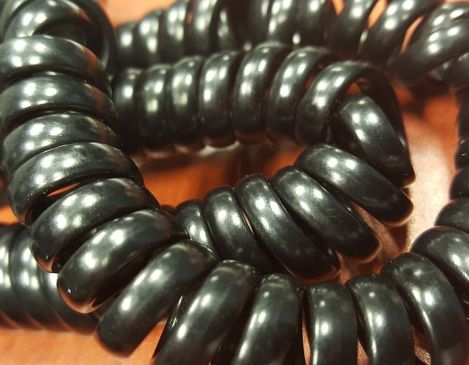All You Need to Know About Coiled Cables

We see cables everywhere, right from the telephone cable next to us to the high tension electric cables that bring electricity to our homes. These are customized to suit various applications by altering factors like conductor sizes, conductor metals, length, shape, insulating material etc. Of these customized cables, coiled cables are a special type that stand out amongst the regular straight ones that we normally see. Read on to know what makes a coiled cable so special and how it is different from regular cables, right from manufacturing to applications.
Coiled Cable: Manufacturing
A coiled cable is not much different from a regular one, except that its curled and cannot be straightened. This very feature sets them league apart, although before the curls are achieved, coiled cables are same as straight ones. Every cable has a metal conductor inside and in the case of coiled wires, these conductors are wound around a mandrel or tube to achieve the spiral shape. Normally, copper, tinned copper or aluminum is used as the metal conductor in these cables. Once this is done, the spiraling metal conductors are insulated using one of the following insulating materials- Polyvinyl Chloride (PVC), Polypropylene (PP) or Polyurethane (PU). Insulation ensures that the cables don’t catch electrical fires or don’t expose themselves to oils; UV rays etc. to incur unwanted abrasions or wear and tear on the surface. A worn out cable can prove detrimental as it leads to short circuits or work place hazards.
Advantages
Here’s how the spiral form of coiled wires make them different from regular cables and offer many advantages.
1. Coiled cables are very elastic in nature and hence make it easy for one to move around and not worry about fixed, confined work spaces. Mobility is a key factor in industries and with spiral cables one can easily reach difficult places that otherwise can’t be reached using regular cables.
2. These wires have a very distinct shape and since their structure is bound by a spiral form, it is very unlikely that they are going to get tangled with other cables while moving around. Though it sounds simple, tangling of wires is a major problem and kills productivity in busy workplaces.
3. Since these cables don’t get tangled easily and are easy to move around, they are also easy to bundle up and store. Hence a lot of time, storage place and human labor are saved.
Applications
A coiled cable, owing to its spiral form and many advantages find a wide array of applications, from household to industrial environments. These spiraled wires take various forms such as electricity cables, telephone wires, air pump cables, adaptor cables, headphone wires and so on. To summarize, a coiled cable is used wherever mobility/elasticity is a prime requirement and tangling of wires is frowned upon.





Leave a Reply